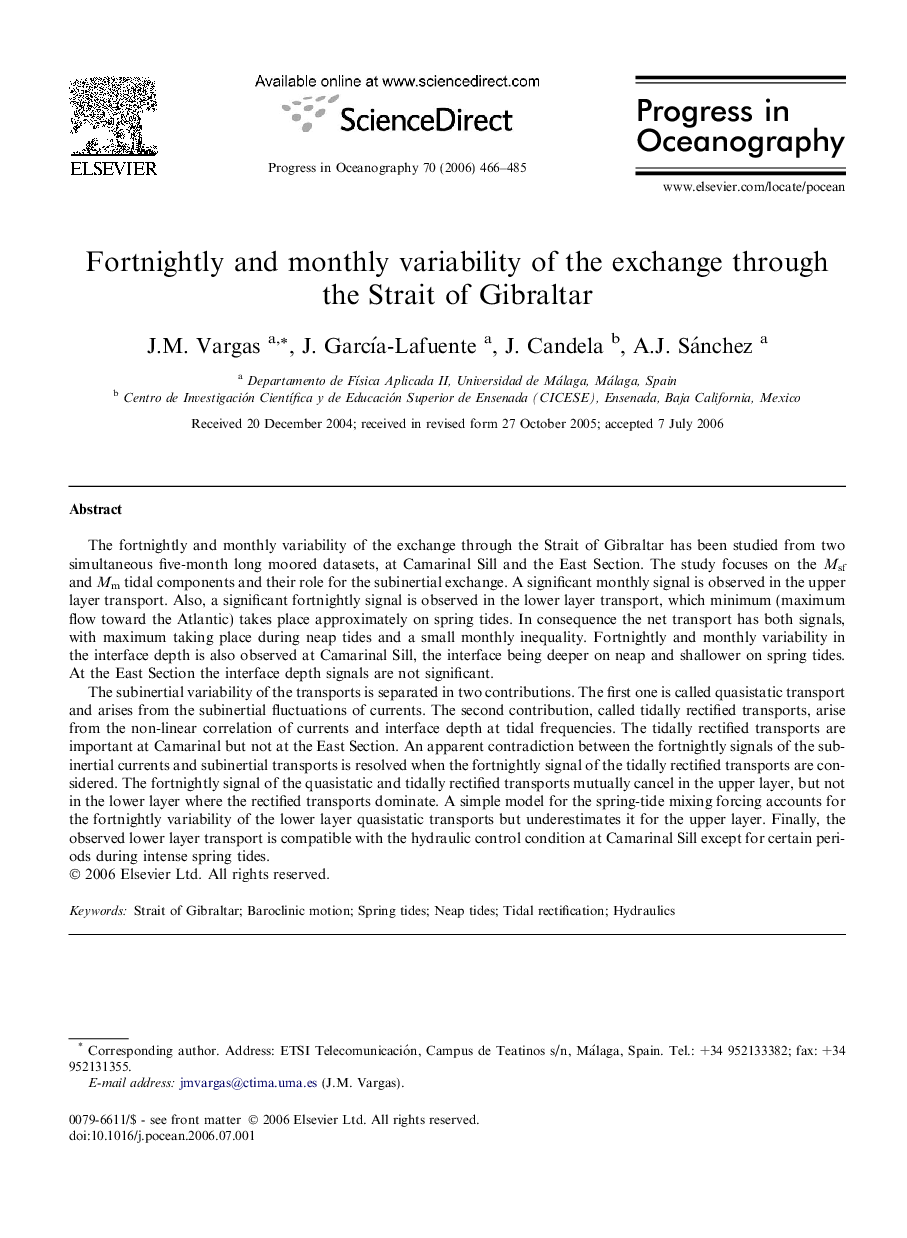| Article ID | Journal | Published Year | Pages | File Type |
|---|---|---|---|---|
| 4553960 | Progress in Oceanography | 2006 | 20 Pages |
The fortnightly and monthly variability of the exchange through the Strait of Gibraltar has been studied from two simultaneous five-month long moored datasets, at Camarinal Sill and the East Section. The study focuses on the Msf and Mm tidal components and their role for the subinertial exchange. A significant monthly signal is observed in the upper layer transport. Also, a significant fortnightly signal is observed in the lower layer transport, which minimum (maximum flow toward the Atlantic) takes place approximately on spring tides. In consequence the net transport has both signals, with maximum taking place during neap tides and a small monthly inequality. Fortnightly and monthly variability in the interface depth is also observed at Camarinal Sill, the interface being deeper on neap and shallower on spring tides. At the East Section the interface depth signals are not significant.The subinertial variability of the transports is separated in two contributions. The first one is called quasistatic transport and arises from the subinertial fluctuations of currents. The second contribution, called tidally rectified transports, arise from the non-linear correlation of currents and interface depth at tidal frequencies. The tidally rectified transports are important at Camarinal but not at the East Section. An apparent contradiction between the fortnightly signals of the subinertial currents and subinertial transports is resolved when the fortnightly signal of the tidally rectified transports are considered. The fortnightly signal of the quasistatic and tidally rectified transports mutually cancel in the upper layer, but not in the lower layer where the rectified transports dominate. A simple model for the spring-tide mixing forcing accounts for the fortnightly variability of the lower layer quasistatic transports but underestimates it for the upper layer. Finally, the observed lower layer transport is compatible with the hydraulic control condition at Camarinal Sill except for certain periods during intense spring tides.
